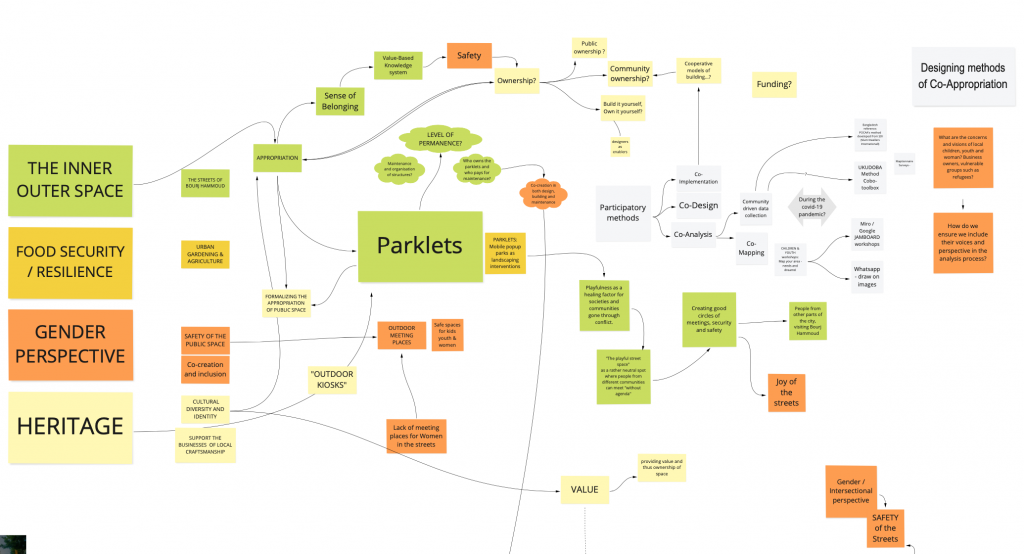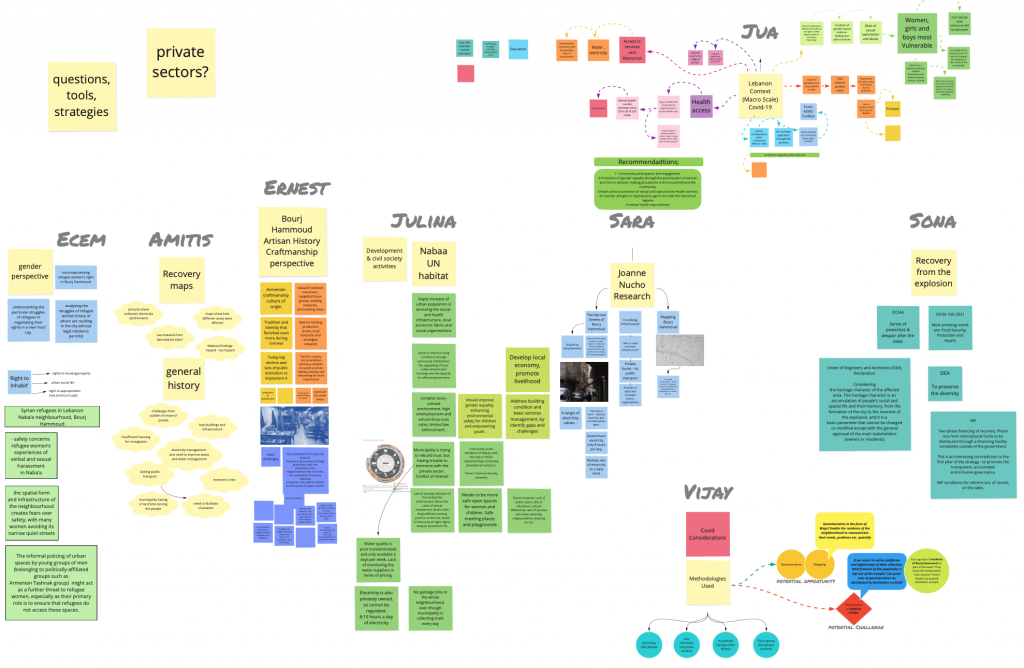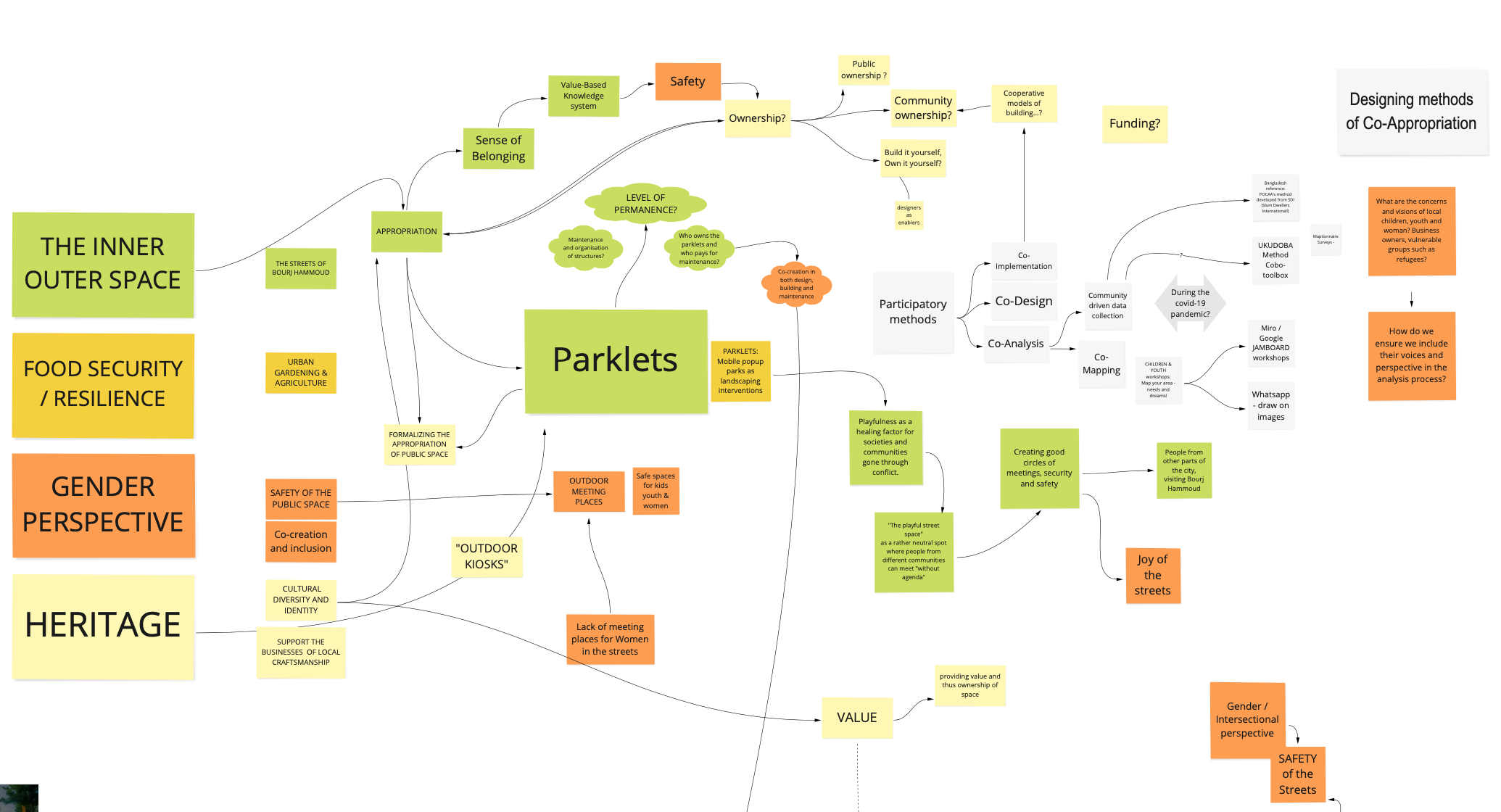During the next month, teachers and students from UIC, AUB, Chalmers and RMIT university will work together on the planning and design components of the post-disaster recovery and reconstruction plan in Bourj Hammoud after the August 4, 2020 port explosion in Beirut, Lebanon. The participants will aim to integrate environmental, cultural, social, and economic issues that affect the wellbeing of the local communities impacted by the event, with the final deliverable contributing to the efforts and work being developed on-site by local NGOs, the municipality and academic partners.
While past field trips have taken us to places like Perú, Ecuador, India, Colombia, Brazil, the Mexican border and the city of Thessaloniki, we will work this year from our classroom in Barcelona creating online alliances. The COVID-19 scenario has forced us to develop creative ways to work with local agents and communities to provide a robust remote methodology. In these changing times, many NGOs are tackling the same challenge, and we seek to contribute to this evolving format by addressing novel techniques with our extensive experience. Together we will work with a methodological approach that consolidates the place-making process as part of a socio-spatial assemblage helping to identify and build spatial and social ties for repair.

Context of the workshop
The main context will be held in Beirut’s peripheral neighbourhood of Bourj Hammoud, located in Mount Lebanon at the north border of the city. The district is heavily influenced by its diverse and eclectic population, consisting of Armenians, Lebanese, Syrians, Palestinian and other post-war immigrating communities. Furthermore, this area has a strong local heritage and identities, making it critical to integrate with the communities and the proposed design outcomes. In addition, the project’s outputs during the fieldwork will be monitored and reviewed and by our local (I)NGO partners, NUSANED, UN-Habitat, UNHCR and Landscape Architects Without Borders alongside the Bourj Hammoud municipality and other civil society actors. Joining all our efforts, we aim to develop urban design strategies for four urban voids and recover lost public space through participatory and inclusive design methods.
Objective and methodology
The student base participating in the workshop combines four universities specialising in different disciplines to get a vast vision of the design brief. The main goal is to implement long-term livelihoods to improve local economies and social structures beyond emergency and aid relief. The workshop will consist of a two-scale analysis and strategies: the spatial analysis of urban layers and risk assessment at the neighbourhood scale and a second scale focused on the specific open space sites. In the process, we will interrelate the spatial analysis with the social aspects devoting a holistic matrix to tackle problems improving positive and protracted strategies.
During an initial brainstorming workshop that took place in February, students were divided into five mixed groups in order to develop a diagnosis related to the effects of the August explosion combined with pandemic pressures and the continuing instabilities faced in Lebanon. The topics analyzed included social integration through gender equality, governance and cultural diversity. For this brainstorming session, we had the input and lectures from George Krikorian of the Bourj Hammoud municipality as well as representatives of the NGO Nusaned and the anthropologist Joanne Nucho, author of the documentary ‘The narrow streets of Bourg Hammoud’. The workshop in the coming weeks will continue to a more in-depth physical and social analysis of the neighbourhood of Bourj Hammoud to then delve into the socio-spatial analysis of the four open spaces and their betterment proposals.

Agents
Universitat Internacional de Catalunya (UIC), School of Architecture, Master of International Cooperation Sustainable Emergency Architecture,
Professors: Dr. Carmen Mendoza Arroyo and Ashley Howard (visiting
researcher RMIT)
American University of Beirut (AUB), Landscape Design and Ecosystem
Management Department at FAFS
Professor: Dr. Gabriella Trovato
Chalmers – Master’s Programme Architecture and Planning Beyond
Sustainability (MPDSD)
Professors: Emilio da Cruz Brandao and Shea Hagy
RMIT – Master of Disaster, Design and Development degree (MoDDD)
Students

